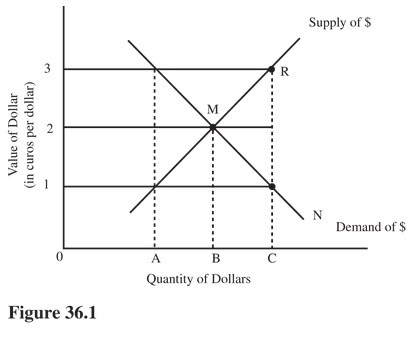Which of the following correctly describes a theory of wage behavior during the business cycle?
a) Real Business Cycle theory holds that workers are relatively unresponsive to wage changes
b) Classical theory holds that nominal wages are inflexible
c) Keynesian theory holds that real wages may rise during recessions, preventing labor markets from clearing
d) Rational expectations theory holds that workers continue to anticipate wage increases during recessions
e) Marxist theory holds that unions cause recessions by keeping wages too high
c) Keynesian theory holds that real wages may rise during recessions, preventing labor markets from clearing
You might also like to view...
What would be the amount of deposits D, given that the monetary base MB = $750 billion, the required reserve rate (rD) = 0.1, the excess reserve rate (ER/D) = 0.005, and non-bank currency to deposits (C/D) equaled 1.2?
What will be an ideal response?
The "self-interest theory" considers an act to be rational if
A. it is an efficient pursuit of whatever aims one has at the moment of deliberation and action. B. it efficiently promotes the ongoing material interest of the person who performs it without the requirement that social justice be achieved. C. it conforms to generally accepted views of justice and also serves one's interests. D. the act was done while the person was sane and coherent.
 You have decided to purchase, directly from the French manufacturer, a helicopter that costs 800,000 euros. At the equilibrium exchange rate between dollars and euros in Figure 36.1, this purchase will cost you
You have decided to purchase, directly from the French manufacturer, a helicopter that costs 800,000 euros. At the equilibrium exchange rate between dollars and euros in Figure 36.1, this purchase will cost you
A. $200,000. B. $400,000. C. $1,600,000. D. $800,000.
Suppose $1 = 10.5 pesos in New York and $1 = 9.6 pesos in Mexico City.If you had $10,000 using arbitrage, your profits would be:
a. $937.50. b. 937 pesos. c. 9,600 pesos. d. $790.